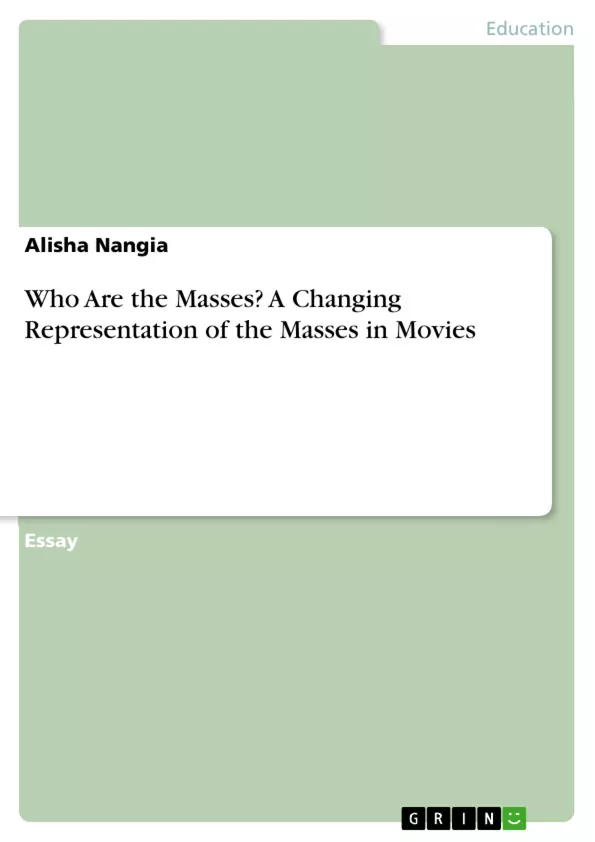Masses formed a perpetual threat to culture. Mass thinking/ prejudice/ suggestion would threaten to swamp individual thinking and feeling. Mass democracy was seen as majority rule of the mob or mob-rule which was harmful for a society or government. We think masses denote the working classes - therefore the problem with the masses are not the lowness and gullibility but the power to alter society and to change the capitalist economy - and this is why masses are abhorred by rulers and the makers of law and society. The leaders of the capitalist economy will do everything to prevent a Revolution and the working classes do not want their conscience to be awakened but most importantly nobody wants to acknowledge that true power does lie with the people
Inhaltsverzeichnis (Table of Contents)
- A Changing Representation of the Masses in Movies
- The Study of Masses in Sociology
- Cinema and the Masses
- Sergei Eisenstein and the Use of the Montage in Battleship Potemkin
- Fritz Lang's Metropolis and the Representation of the Masses
Zielsetzung und Themenschwerpunkte (Objectives and Key Themes)
This text aims to explore the changing representation of the "masses" in movies, particularly focusing on the films Battleship Potemkin and Metropolis. It delves into the historical context surrounding the emergence of the term "mass" and its association with the working class and the threat of revolution.
- The historical and sociological meaning of the term "mass"
- The role of the masses in social and political movements
- The use of cinematic techniques to portray the masses
- The depiction of revolution and social conflict in Battleship Potemkin
- The representation of the working class and the potential for rebellion in Metropolis
Zusammenfassung der Kapitel (Chapter Summaries)
The first chapter introduces the concept of "masses" and explores its origins in the context of the Industrial Revolution and the emergence of a working class. It examines the negative connotations associated with the term and its perceived threat to established social order. The second chapter delves into the study of masses in sociology, highlighting the characteristics of a crowd and its temporary and unorganized nature. It emphasizes the anonymity and uniformity within a crowd, which can lead to a loss of individual identity and a sense of collective behavior. The third chapter explores the intersection of cinema and the concept of the masses. It discusses the emergence of early cinema and its focus on realism, particularly in portraying crowd scenes. The chapter also touches upon the use of cinema as a medium for political propaganda, highlighting the work of directors like Sergei Eisenstein and Fritz Lang. The fourth chapter analyzes Sergei Eisenstein's Battleship Potemkin, focusing on the director's use of the montage technique to evoke emotions and convey political messages. It highlights the symbolic representation of the masses in the film and their role in the revolutionary struggle. The final section of the text examines Fritz Lang's Metropolis, contrasting its German Expressionist style with the more realistic approach of Battleship Potemkin. It explores the representation of the working class in the film and their mechanical existence, highlighting the potential for rebellion and the conflict between the bourgeois and the working class.
Schlüsselwörter (Keywords)
The primary focus of this text is on the concept of the "masses," their representation in cinema, and their role in social and political movements. Key themes and concepts include the Industrial Revolution, the working class, revolution, social conflict, propaganda, montage, and the German Expressionist style of filmmaking.
- Quote paper
- Alisha Nangia (Author), 2011, Who Are the Masses? A Changing Representation of the Masses in Movies, Munich, GRIN Verlag, https://www.hausarbeiten.de/document/283839


